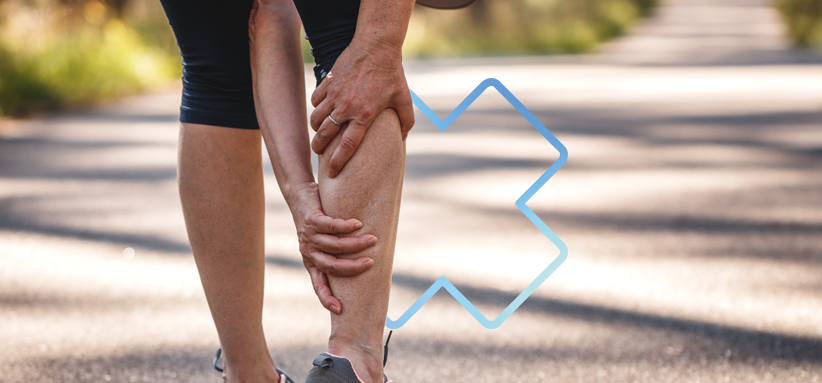Leg pain, such as sciatic nerve pain or periostitis, can significantly interfere with your daily activities. The leg supports the body’s weight and plays a key role in movement. Fortunately, several health professionals can help you relieve your pain and return to optimal function.

Definition and symptoms
Leg pain can appear in different forms: burning sensations, tingling, numbness, or sharp pain. It may be constant or occur during certain activities.
For example, pain caused by the sciatic nerve can radiate from the buttock down to the foot, often accompanied by pins-and-needles or an electric-shock sensation. Periostitis (shin splints), on the other hand, presents as sharp pain or a burning sensation on the inner side of the lower leg.
Why does my leg hurt?
Frequently Asked Questions (FAQ)
When should you worry about leg pain?
If the pain persists, worsens, or is accompanied by loss of sensation, difficulty walking, or fever, it is recommended to seek medical attention promptly.
Why do I have pain in only one leg?
Localized pain may indicate a nerve compression, a muscle injury, or a targeted inflammation such as periostitis.
What illness causes leg pain?
Leg pain can result from several conditions, such as sciatica, osteoarthritis, or even circulatory problems.
What are the possible causes of pain in the bones of the legs?
Bone pain may be caused by a stress fracture, inflammation of the periosteum (periostitis), or more rare conditions such as a bone infection.
How can you tell if the pain is muscular or bone-related?
Muscle pain is generally linked to movement or pressure on the muscle. Bone pain is often deeper and more constant.
What causes radiating pain in the leg?
It may come from irritation of the sciatic nerve, for example due to a herniated disc, piriformis syndrome, or nerve compression.
How can you relieve leg pain?
Expert tip: check your running pattern
If your pain is related to running, a running gait assessment can reveal overload or poor alignment. An ideal cadence is around 180 steps per minute. Run more lightly, with your feet close to the ground, to reduce impact.
Pay attention to your symptoms. Mild pain is sometimes normal, but if it increases, it’s a sign to slow down or take a break.
Which professional should you consult?
Different health professionals often work together to maximize results. When in doubt, we recommend consulting a physiotherapist first so they can assess your needs and suggest the right treatments for your specific leg condition. If necessary, they will refer you to other professionals to optimize your rehabilitation.
Why consult a physiotherapist?
After a thorough assessment of your leg, a physiotherapist will explain which structures are affected and offer you a treatment plan based on your goals. Different options can be considered such as exercises specific to your condition, joint mobilizations, muscle relaxation techniques, etc. Your physiotherapist will also give you advice on how to relieve pain and get back to your activities.
Why consult an occupational therapist?
An occupational therapist will assess the impact of your leg condition on your usual abilities such as work, household chores and hobbies. Their treatments, which can take the form of strengthening exercises or simulating work tasks, for example, will help you maximize your autonomy at each stage of your recovery.
Why consult an osteopath?
Using various manual techniques, an osteopath will treat mobility restrictions that can affect all the structures of your body (bones, muscles, ligaments, viscera, etc.) related to your leg. Improved mobility allows the body to recover better and decreases pain.
Why consult a massage therapist?
A massage therapist will mainly work to release tension in the superficial and deep tissues that affect your leg to help you reduce pain and move more freely. Their treatments will also help increase blood circulation to promote better recovery.
Why consult an acupuncturist?
Through various techniques and using therapeutic tools such as needles and suction cups, an acupuncturist will work to reduce pain, stress, muscle tension and inflammation that can occur following a leg injury.
Why consult a kinesiologist?
A kinesiologist ill teach you how to do adapted exercises, based on their evaluation of your ability to move your leg as well as your physical condition, so that you can resume your activities.
Do you have questions? Call us today at 1-855-743-9872 or email us at informationsweb@physioextra.ca. Our team will guide you to the right professional.


